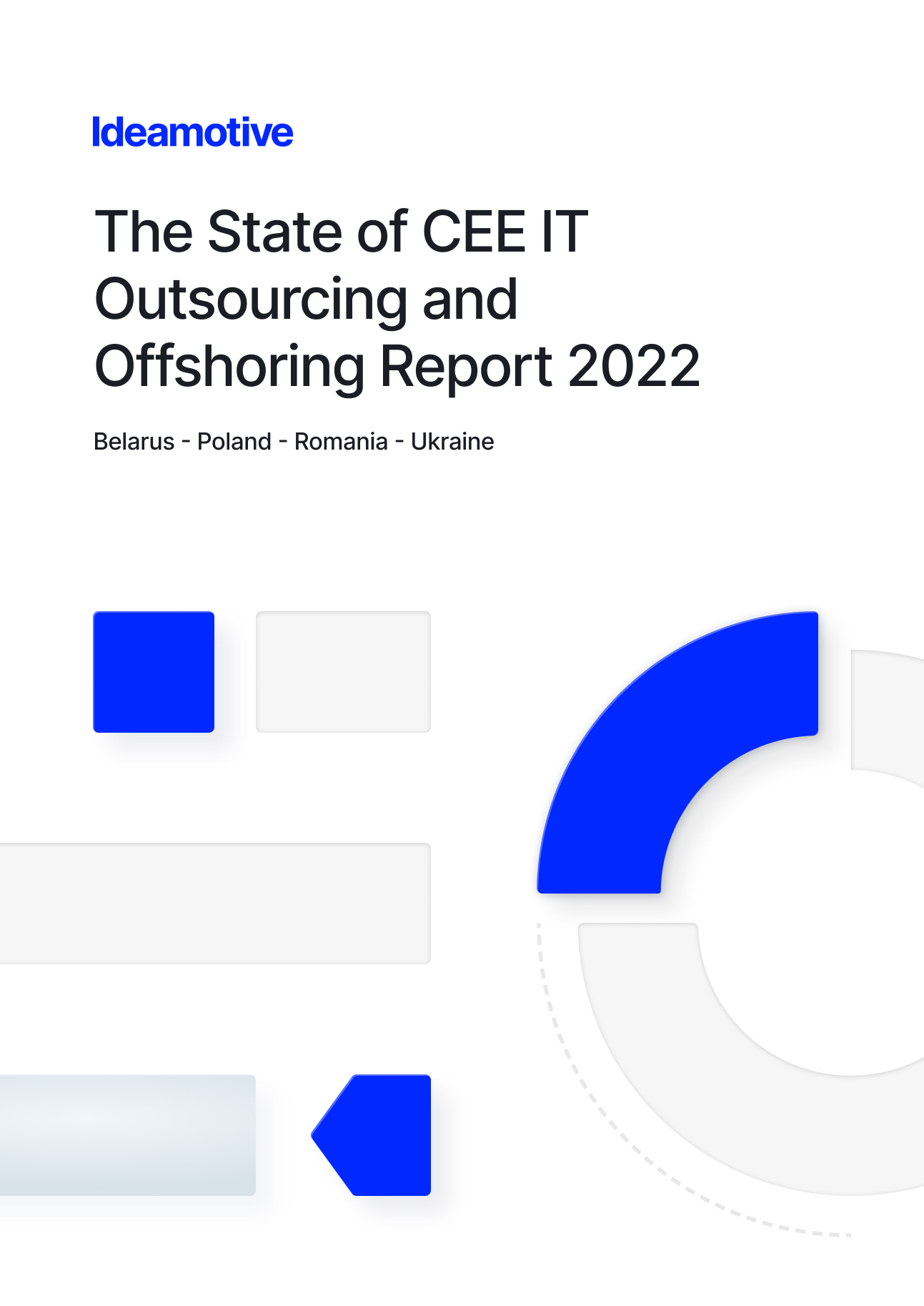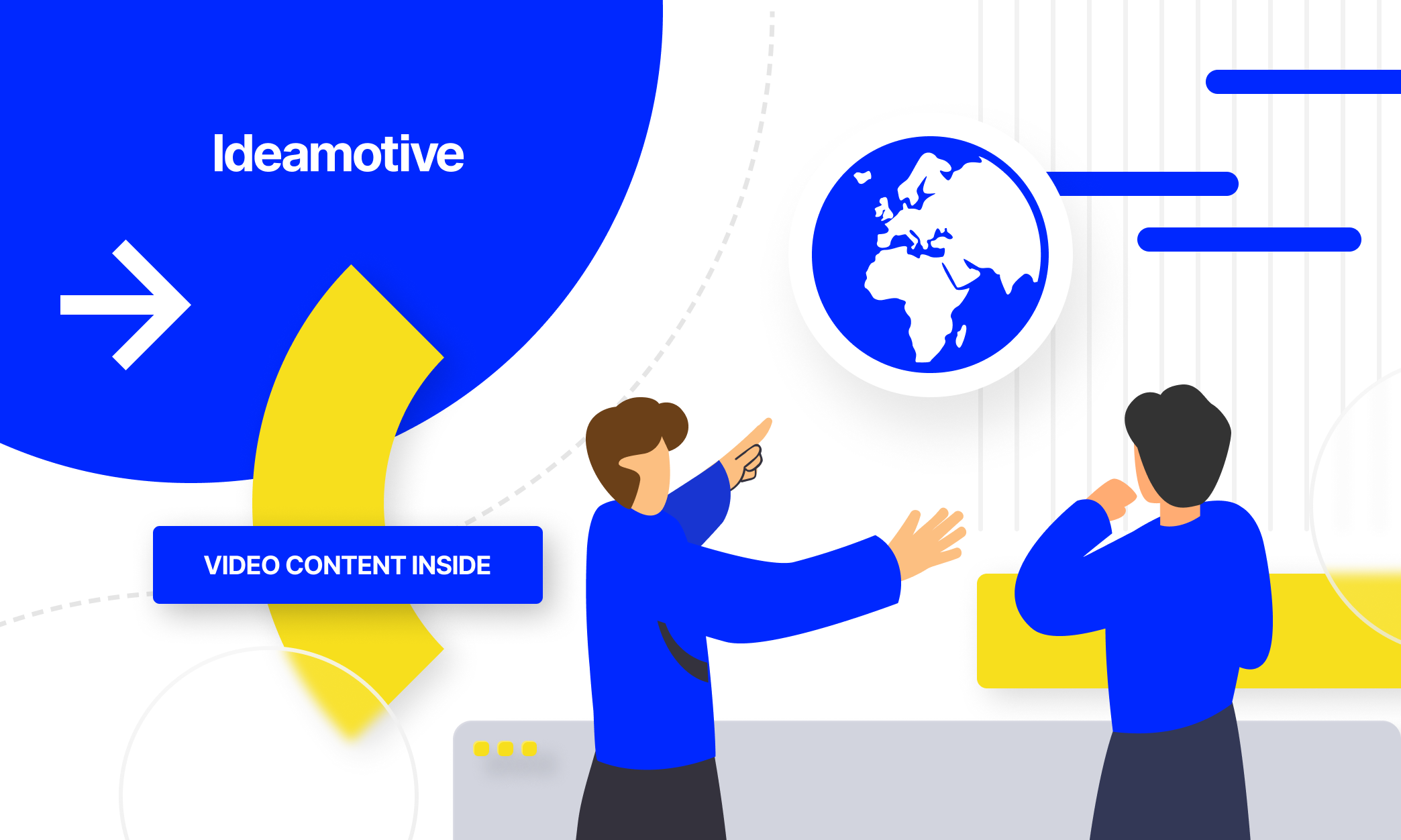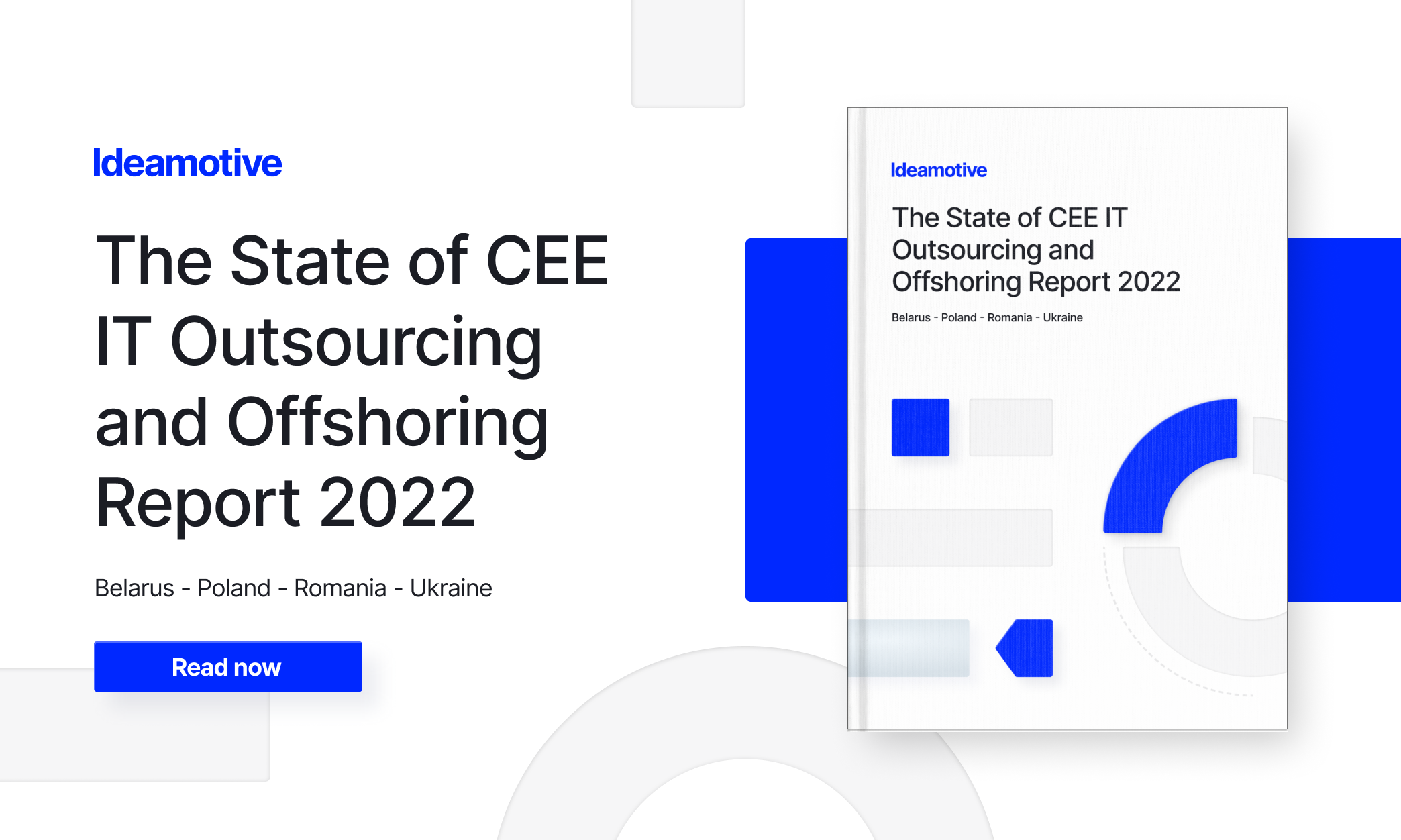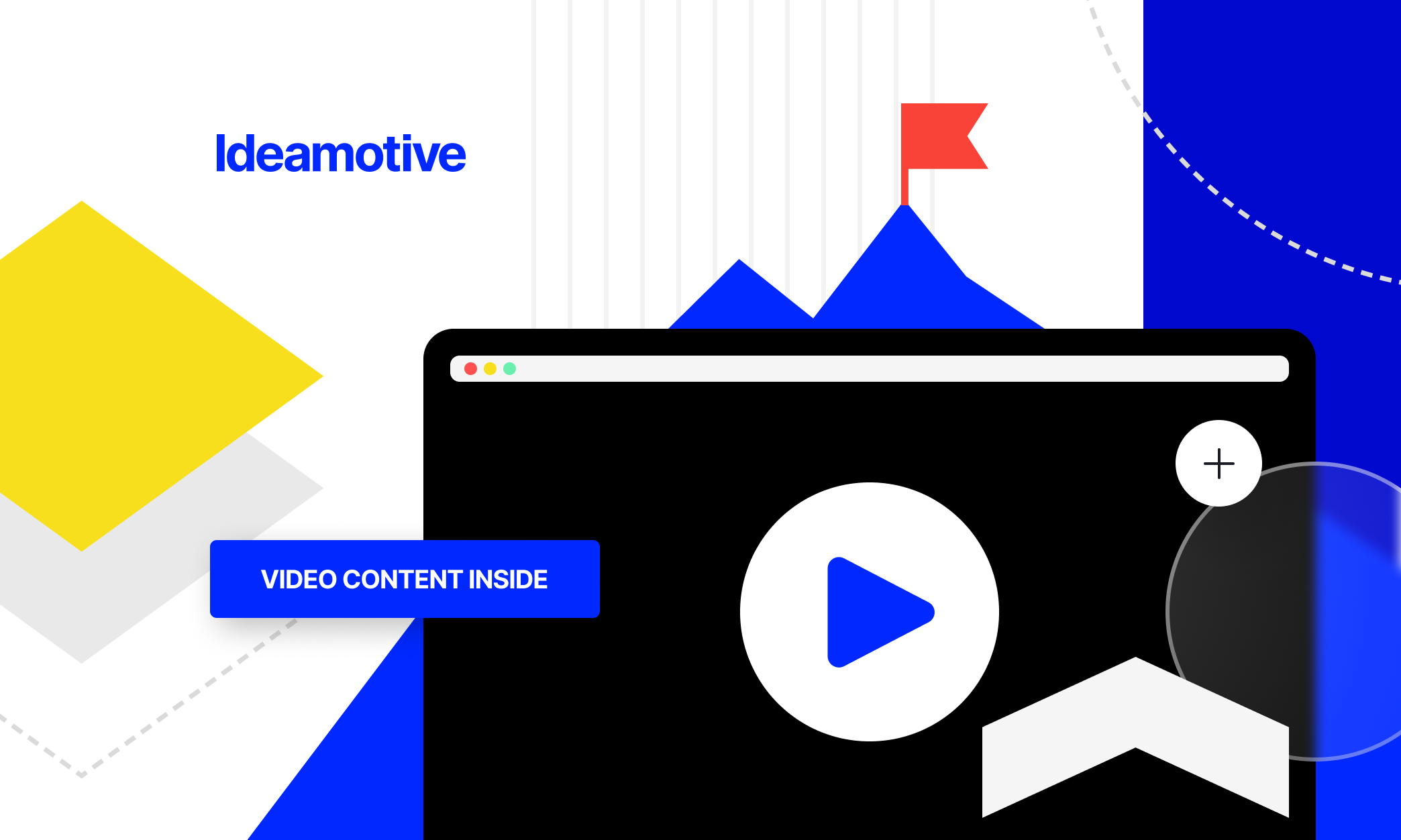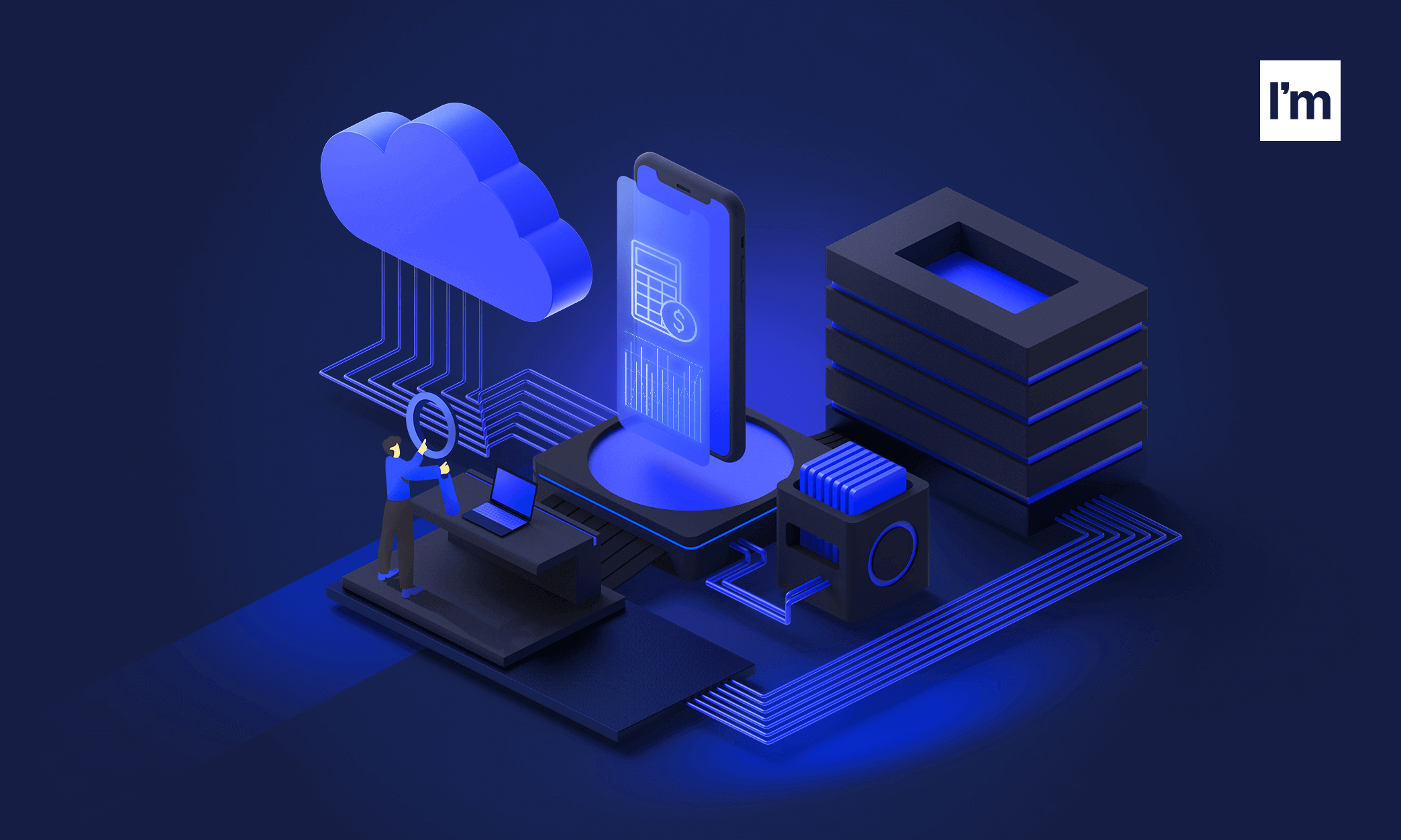The IT sector has witnessed a significant increase in burnout, especially in the aftermath of the pandemic. The impact of employee burnout can be costly as it can lead to decreased productivity, increased absenteeism, higher turnover rates, and diminished employee engagement and satisfaction.
An effective way to prevent burnout is to streamline IT workflow and processes. An efficient workflow helps employees complete their tasks without wasting unnecessary time, making it easier for them to maintain a healthy work-life balance.
In this article, we’ll look at how IT management can adopt workflow methodologies that can help streamline workflow processes and mitigate burnout. In particular, we’ll explore two of the most popular workflow methodologies in the IT sector, which are Agile and Waterfall.
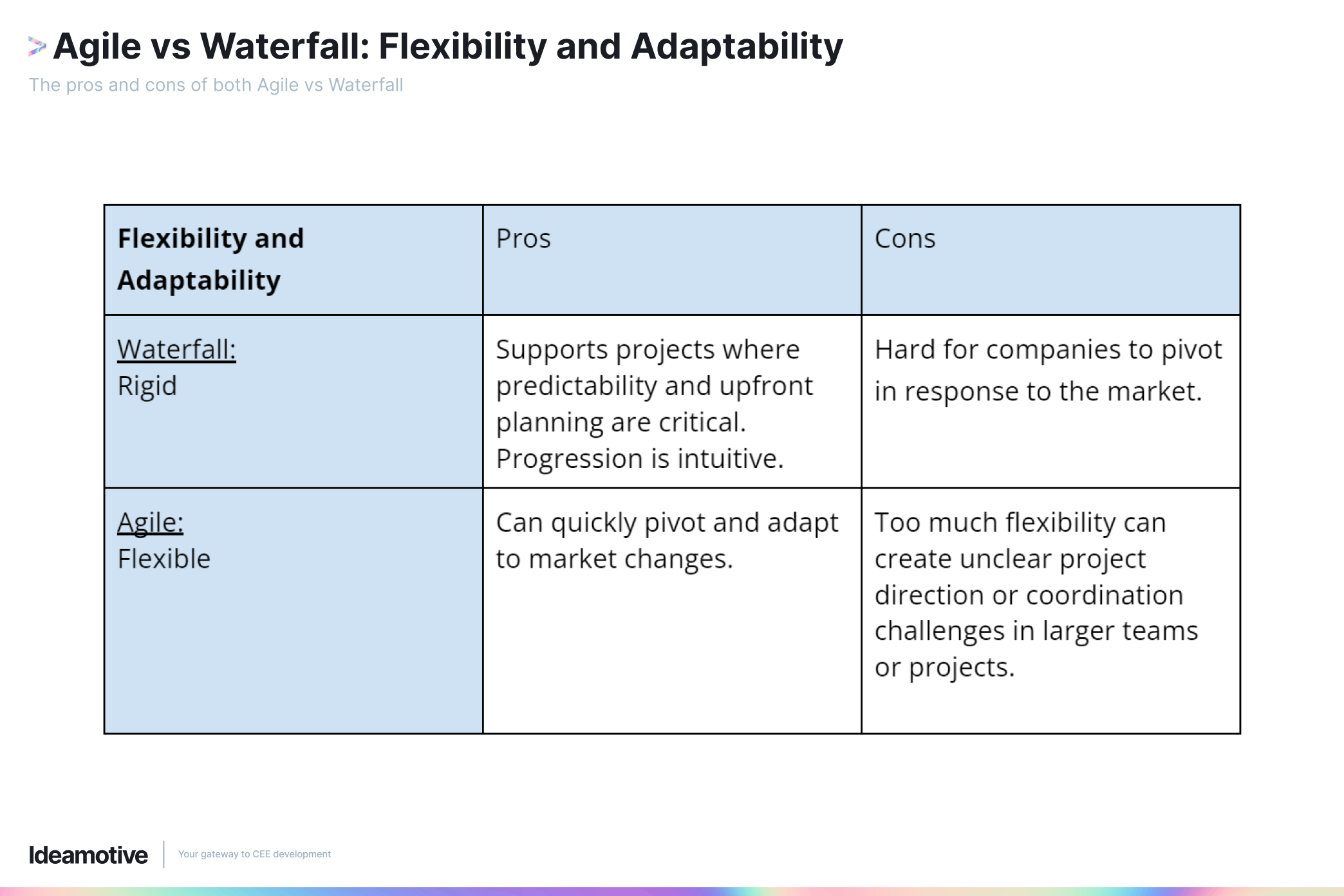
This article will cover the key differences, pros and cons, and case studies of the Agile methodology vs Waterfall approach. We’ll also look at what factors to consider when choosing between Agile vs Waterfall, plus other recommendations to help IT managers adopt the right approach for their team.
Overview of Agile vs Waterfall
Agile and Waterfall methodologies are project management strategies to help teams stay aligned and productive to reach their goals faster. Here’s a brief overview and history of Agile vs Waterfall methodologies.
Waterfall methodology
The Waterfall approach is a sequential project management strategy that follows a linear and phased progression from one stage to another. The approach was established in 1970 by Winston W. Royce, an American computer scientist who was a pioneer in the field of software development.
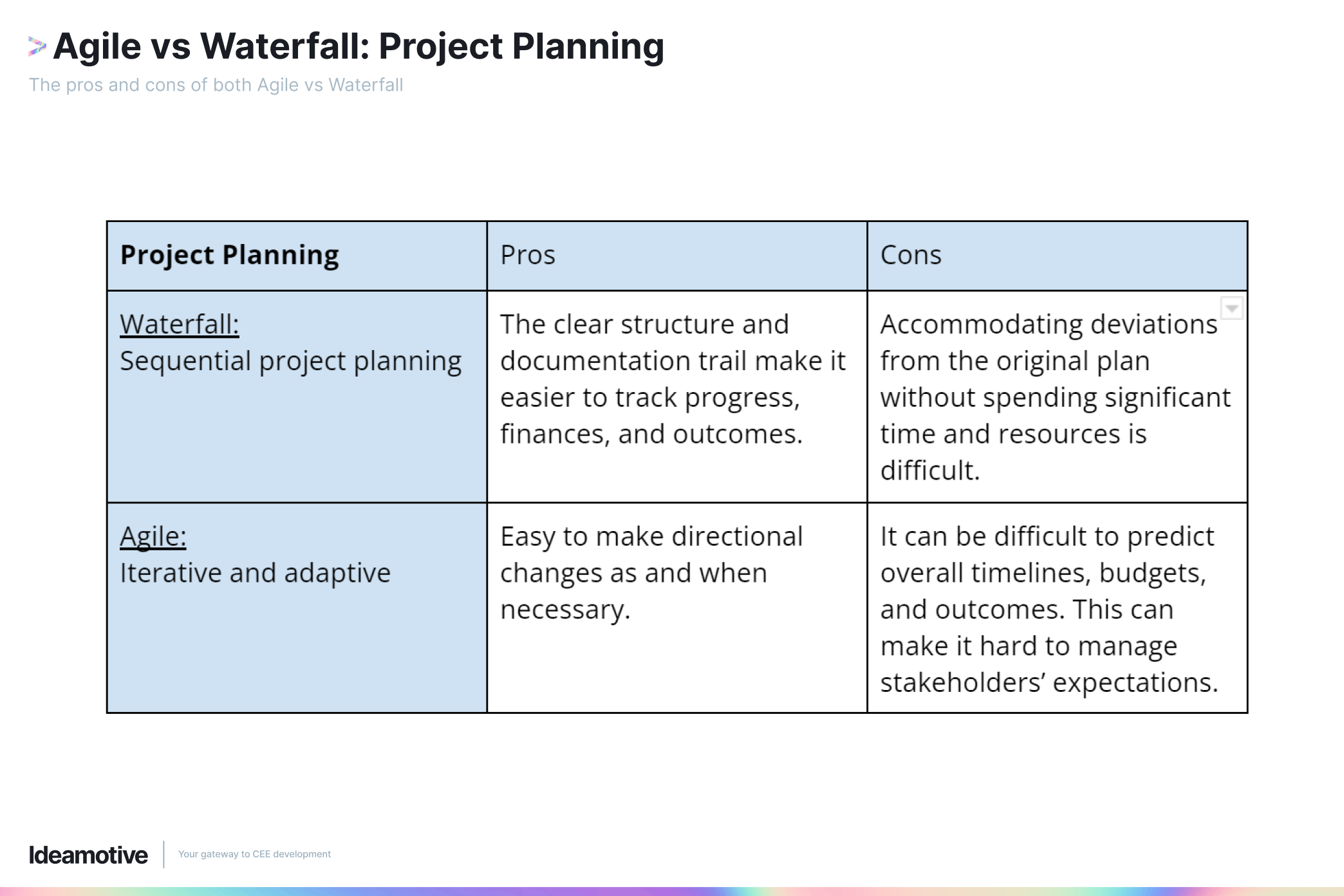
Since the publication of Royce’s paper on the Waterfall titled “Managing the Development of Large Software Systems”, the methodology gained prominence as a structured and disciplined project management tool for developing software.
Agile methodology
The Agile approach is built around a set of values that emphasise flexibility, collaboration, and iterative development. Instead of being linear, an Agile project focuses on continuous delivery and incorporating feedback throughout the development lifecycle.
The strategy was created in the early 2000s by a group of software developers who wanted an alternative to traditional, linear methodologies, such as the Waterfall model.
The Agile Manifesto for agile software development has become the foundation of many different Agile tools and frameworks, such as Scrum, Kanban, and Extreme Programming (XP). Many of these Agile tools and frameworks are popular choices within the software development community.
5 key differences between Agile vs Waterfall
Although the Agile approach was created to address the shortcomings of the Waterfall methodology, it isn’t inherently superior. Rather, each approach has its own strengths and weaknesses.
IT managers choosing between Agile vs Waterfall must first understand how each approach works, so they can make an informed decision on which one is best suited for the specific project they are undertaking.
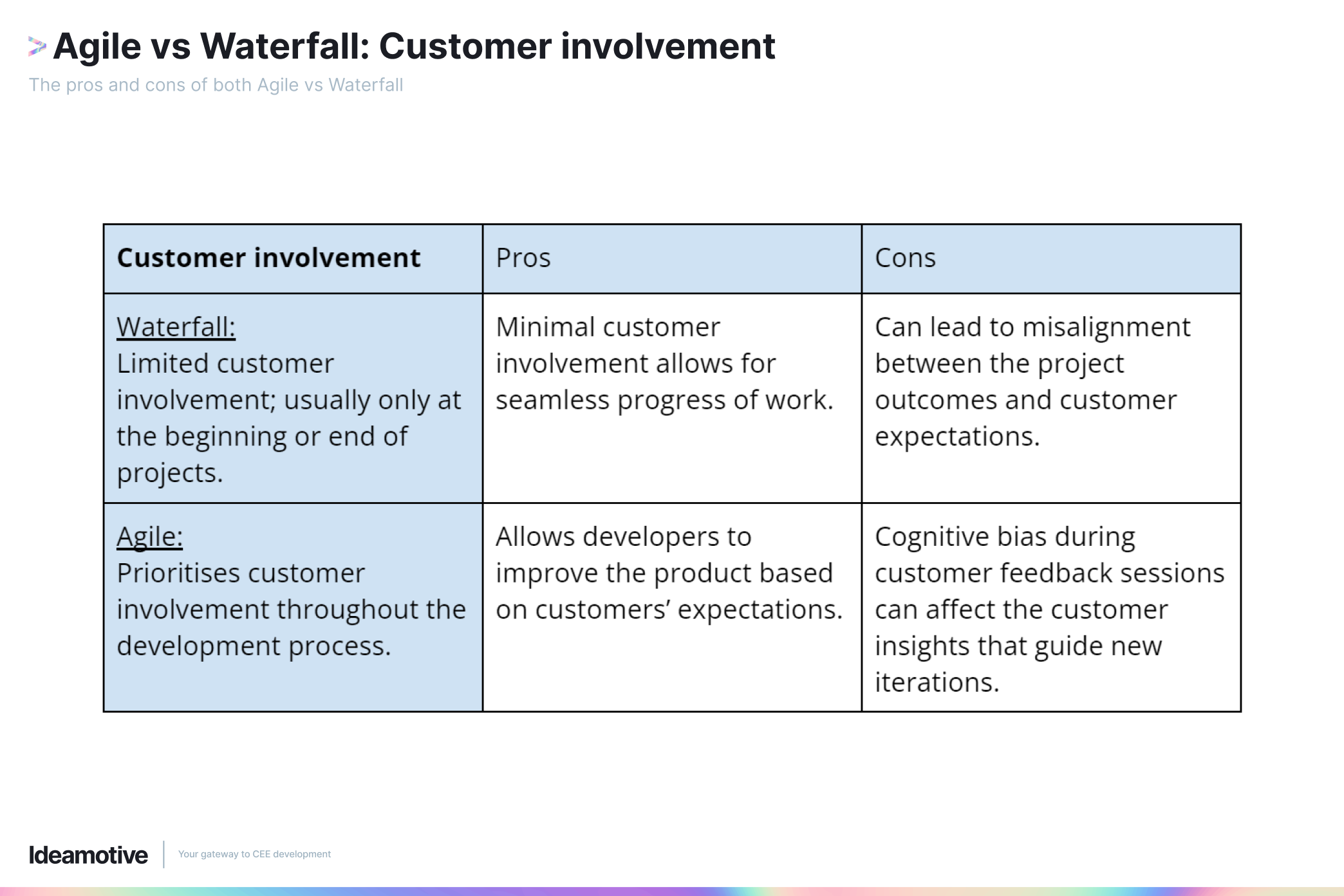
Here are the six key differences between Agile vs Waterfall that every IT project manager must understand to choose the right project management strategy:
Project Planning
Waterfall:
Waterfall projects focus on planning upfront. The approach begins by breaking the job down into five phases:
- Phase 1: Requirements
- Phase 2: Design
- Phase 3: Implementation
- Phase 4: Verification
- Phase 5: Maintenance
Each phase is then broken down into predefined deliverables and milestones. As a result, IT managers will have a detailed plan and complete requirements from the very beginning of a project.
Agile:
In contrast, Agile takes a more iterative and adaptive approach to planning. There is no upfront planning of the entire process. Rather, the Agile approach emphasizes frequent re-evaluation and adjustment of plans based on customer feedback and changing requirements.
Instead of a stage-by-stage plan that must be followed sequentially, as the Waterfall approach imposes, the Agile methodology allows a lot of back and forth between stages. Developers will execute changes in small iterations and then get feedback that will guide them in choosing the next step to take.
Flexibility and adaptability
Waterfall:
Upfront planning of all five phases that must be completed sequentially leaves very little room for making changes once the plan is set to execution. As such, the Waterfall methodology is not very flexible.
If the consumer needs or market environments change, Waterfall projects are stuck on the initial plan. For example, due to the upfront planning of projects, the budget allocated for each phase could have already been invested. This makes it hard to change course and reinvest in a different plan.
Agile:
The Agile methodology is designed as a flexible alternative to the Waterfall approach. What makes this methodology very flexible and adaptable to change are the four values that it is built on:
- Individuals and interactions over processes and tools
- Working software over comprehensive documentation
- Customer collaboration over contract negotiation
- Responding to change over following a plan
By taking an iterative approach that values interaction, usability, customer collaboration, and the ability to respond to change, the Agile methodology cuts through red tape that typically makes software development a slow process.
Customer involvement
Waterfall:
Waterfall projects tend to take on a top-down approach. Since planning the project’s objective, scope, timeline, and deliverables are determined upfront, it usually means that someone at a high level makes most of the decisions.
Customer feedback and involvement are usually limited until the final product is delivered, where a customer may give feedback through beta testing. Customers may sometimes be involved before planning begins, such as through market research to determine the project’s objective.
Agile:
The Agile approach makes customer involvement the highest priority. Instead of following a detailed, predetermined stage-by-stage plan, the Agile methodology collaborates with customers throughout the development process.
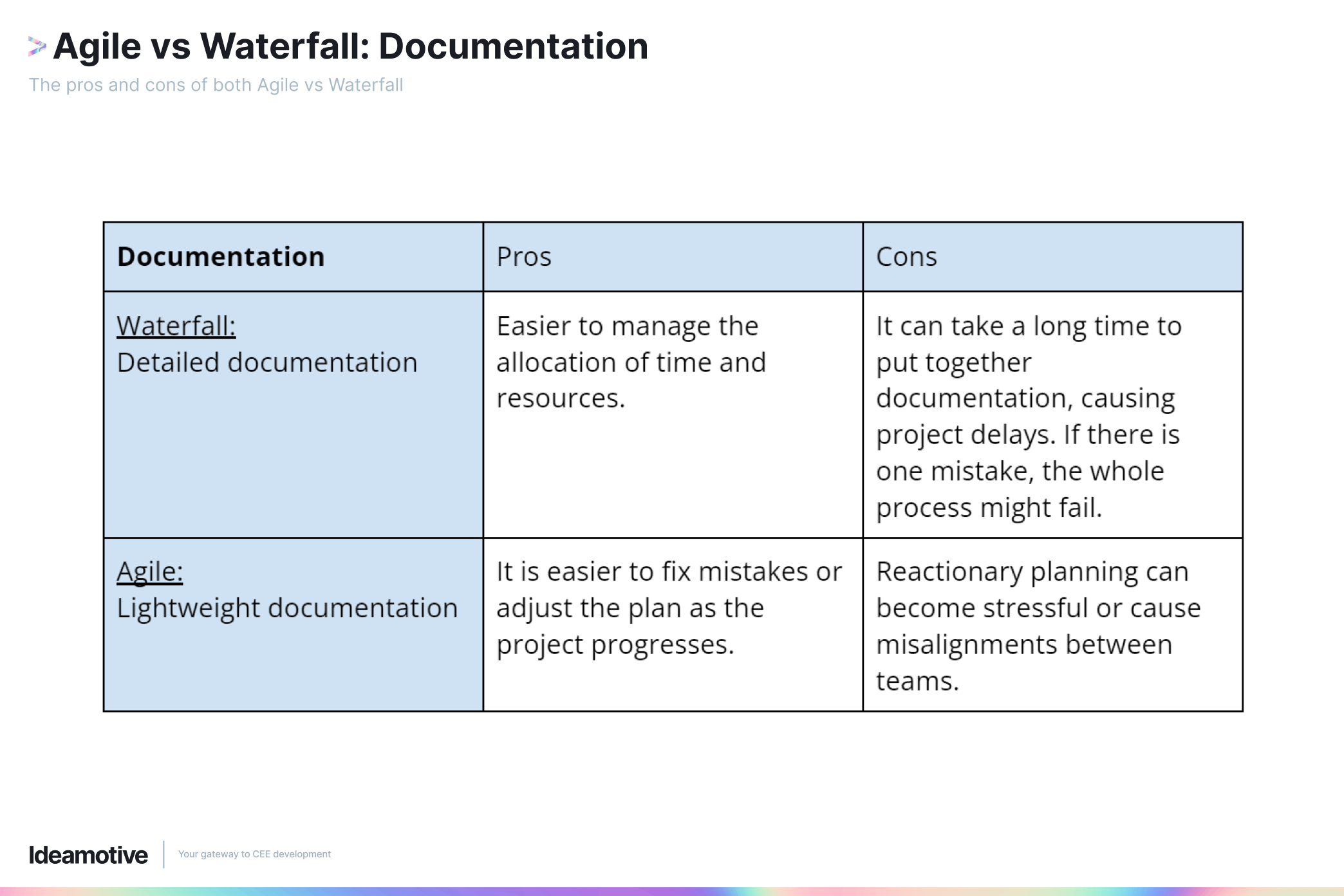
Thus, Agile projects are iterative and incremental, with iterations done frequently in a set amount of time called sprints. Software developers using the Agile approach are then able to receive customer feedback during development so they can make improvements without needing to wait for the finished project.
Documentation
Waterfall:
The Waterfall methodology places significant emphasis on upfront documentation, including detailed requirements specifications, design documents, and formal change control processes.
Agile:
An Agile project does not dismiss documentation entirely. However, they place working software and customer collaboration over comprehensive documentation. Agile teams prioritise lightweight and just-enough documentation to support development and communication.
Team Structure & Roles
Waterfall:
Waterfall projects often have clearly defined roles and responsibilities for each phase, with specialised teams working in a more siloed manner.
For example, a Waterfall project may have separate teams responsible for different phases of the project. Each team is accountable for completing their phase. This siloed structure allows for specialisation, with team members developing deep expertise in their respective areas.
Agile:
Agile promotes cross-functional teams that collaborate closely, share responsibilities, and work collectively towards project goals.
Roles in Agile, such as Scrum Master and Product Owner, are focused on facilitating teamwork, communication, and prioritisation. These roles are not necessarily defined by specialisation, as different people can adopt different roles or even wear multiple hats as and when needed.
Case studies: Agile vs Waterfall in action
In this section, we will examine real-world case studies that highlight the practical application of both Agile and Waterfall methodologies. These case studies offer insights into how the pros and cons of both approaches translate into real-world results, so IT managers can have a better grasp of how to choose appropriately.
Waterfall approach: NASA Voyager Spacecraft Project, 1977
Space missions are one of the best cases for using a waterfall process since these missions are costly and have an inherently high risk of failure. Project plans must prove to be cost-effective before committing to their execution, which includes any software development alongside physical construction.
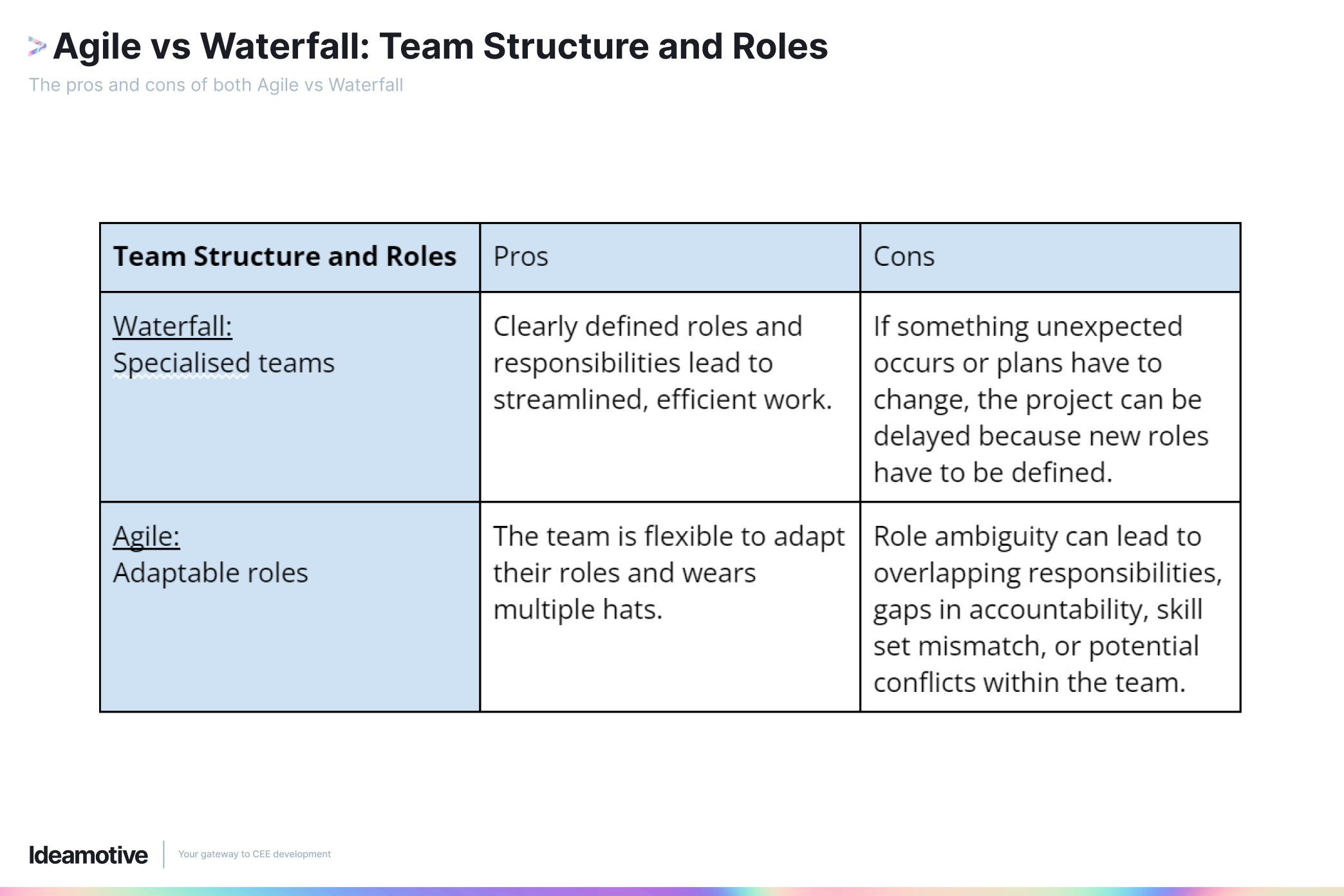
The Voyager project is one example of a successful space mission that utilised the waterfall approach to project management. It became NASA’s longest-lived mission, logging 45 years in space and collecting valuable data about Jupiter, Saturn, Uranus, Neptune and the solar system.
Agile approach: Spotify’s transformation
Spotify is a popular music streaming platform that experienced significant transformation after adopting the Agile methodology. By embracing Agile frameworks such as Scrum, Kanban, and Scrumban, Spotify organised their development teams into autonomous squads.
Each squad had a clear mission and was responsible for the end-to-end development of their mission, from ideation to deployment. By decentralising decision-making, multiple squads had the autonomy to creatively solve challenges to achieve the mission.
The Agile model allowed Spotify to deliver products quickly and swiftly respond to market demands and user preferences. The Agile approach also facilitated scalability and adaptability for Spotify as it grew.
Factors to consider when choosing a methodology
When choosing between Agile vs Waterfall methodologies, IT project managers need to consider the following factors:
- Project requirements:
The Agile methodology is well-suited for projects with dynamic requirements, while the Waterfall approach is better for stable projects with well-defined requirements.
- Project size and complexity:
Complex projects that require frequent collaboration should adopt an Agile approach while the Waterfall methodology is better for smaller, less complex projects that have a straightforward structure.
- Time and budget constraints:
The Agile approach enables faster time-to-market, but it may be hard to estimate costs upfront. The predictable Waterfall model is better for projects with strict time and budget constraints, however, it may require more time to reach the desired outcomes.
Recommendations for IT management
To successfully execute software development using the Agile or Waterfall approach, you also need to ensure you have the right people. This means having qualified IT or web project managers who are familiar with these methodologies.
It also means setting the foundations for the right organizational culture. Those working under a hierarchical and process-oriented work culture will find it difficult to adjust to an Agile model. Similarly, those used to having autonomy and flexibility will find it hard to work with the Waterfall approach.
Thus, IT managers must find ways to make the transition of organizational culture as smooth and as seamless as possible when needed.
Conclusion
The Agile model offers flexibility, adaptability, and customer-centricity, making it suitable for dynamic projects with evolving requirements. On the other hand, the Waterfall methodology provides structure, predictability, and a sequential approach, making it suitable for projects with stable and well-defined requirements.
When chosen wisely and executed well, both the Agile and Waterfall methodologies can help companies achieve their project goals, improve productivity, and deliver successful software solutions.








